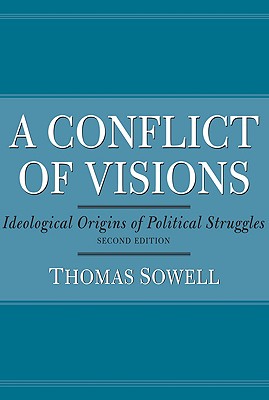A Conflict of Visions: Ideological Origins of Political Struggles

A Conflict of Visions: Ideological Origins of Political Struggles
Thomas Sowell's "extraordinary" explication of the competing visions of human nature lie at the heart of our political conflicts (New York Times) Controversies in politics arise from many sources, but the conflicts that endure for generations or centuries show a remarkably consistent pattern. In this classic work, Thomas Sowell analyzes this pattern. He describes the two competing visions that shape our debates about the nature of reason, justice, equality, and power: the "constrained" vision, which sees human nature as unchanging and selfish, and the "unconstrained" vision, in which human nature is malleable and perfectible. A Conflict of Visions offers a convincing case that ethical and policy disputes circle around the disparity between both outlooks.
PRP: 235.50 Lei
Acesta este Prețul Recomandat de Producător. Prețul de vânzare al produsului este afișat mai jos.
211.95Lei
211.95Lei
235.50 LeiLivrare in 2-4 saptamani
Descrierea produsului
Thomas Sowell's "extraordinary" explication of the competing visions of human nature lie at the heart of our political conflicts (New York Times) Controversies in politics arise from many sources, but the conflicts that endure for generations or centuries show a remarkably consistent pattern. In this classic work, Thomas Sowell analyzes this pattern. He describes the two competing visions that shape our debates about the nature of reason, justice, equality, and power: the "constrained" vision, which sees human nature as unchanging and selfish, and the "unconstrained" vision, in which human nature is malleable and perfectible. A Conflict of Visions offers a convincing case that ethical and policy disputes circle around the disparity between both outlooks.
Detaliile produsului










